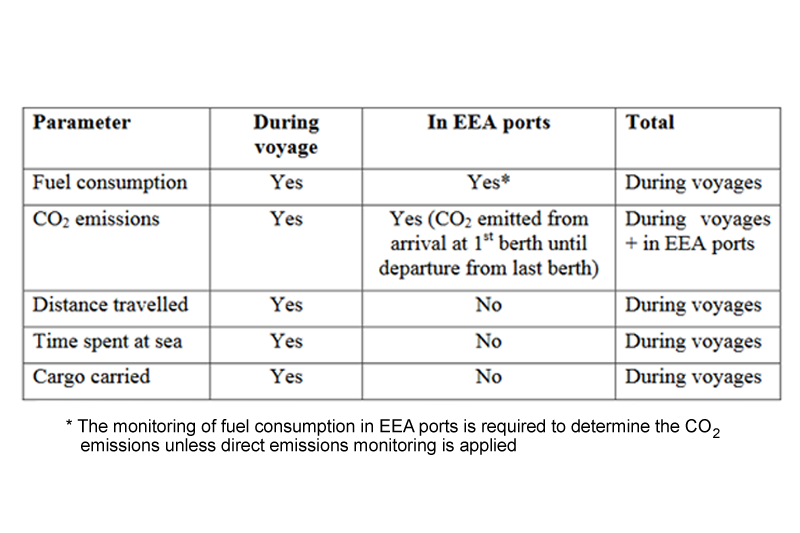Mass Emissions Reporting
As part of the wider EU control of Greenhouse Gas (GHG) emissions, vessel operators are required to report the verified CO2 emissions coming into, leaving and travelling between EU ports. The European Commission provides complete emissions report online.
Operators are required to report the total CO2 emitted during each voyage. The European Sustainable Shipping Forum (ESSF) provides technical guidance to assist in the adoption of the monitoring, reporting and verification (MRV) of carbon dioxide (CO2) emissions from maritime transport. ESSF produced guidance/best practices documents for the calculation of this. Monitoring and reporting of fuel consumption with associated CO2 emission factors and other relevant parameters is one method. This can be complicated using one or more methods such as Bunker Fuel Delivery Note (BDN) periodic stock-takes of fuel tanks and Bunker fuel tank monitoring on board.
In-Situ CO2 Emissions Measurement

Direct emissions measurement of CO2 is the more accurate method to show compliance. With Protea’s in-situ stack marine emission analyser, continuous measurement of CO2 concentration is combined with flow readings to give both a mass emissions value and a total emitted mass of CO2.
The published data from Regulation (EU) 2015/757 on the monitoring, reporting and verification of CO2 emissions from maritime transport can be viewed here: mrv.emsa.europa.eu/.
